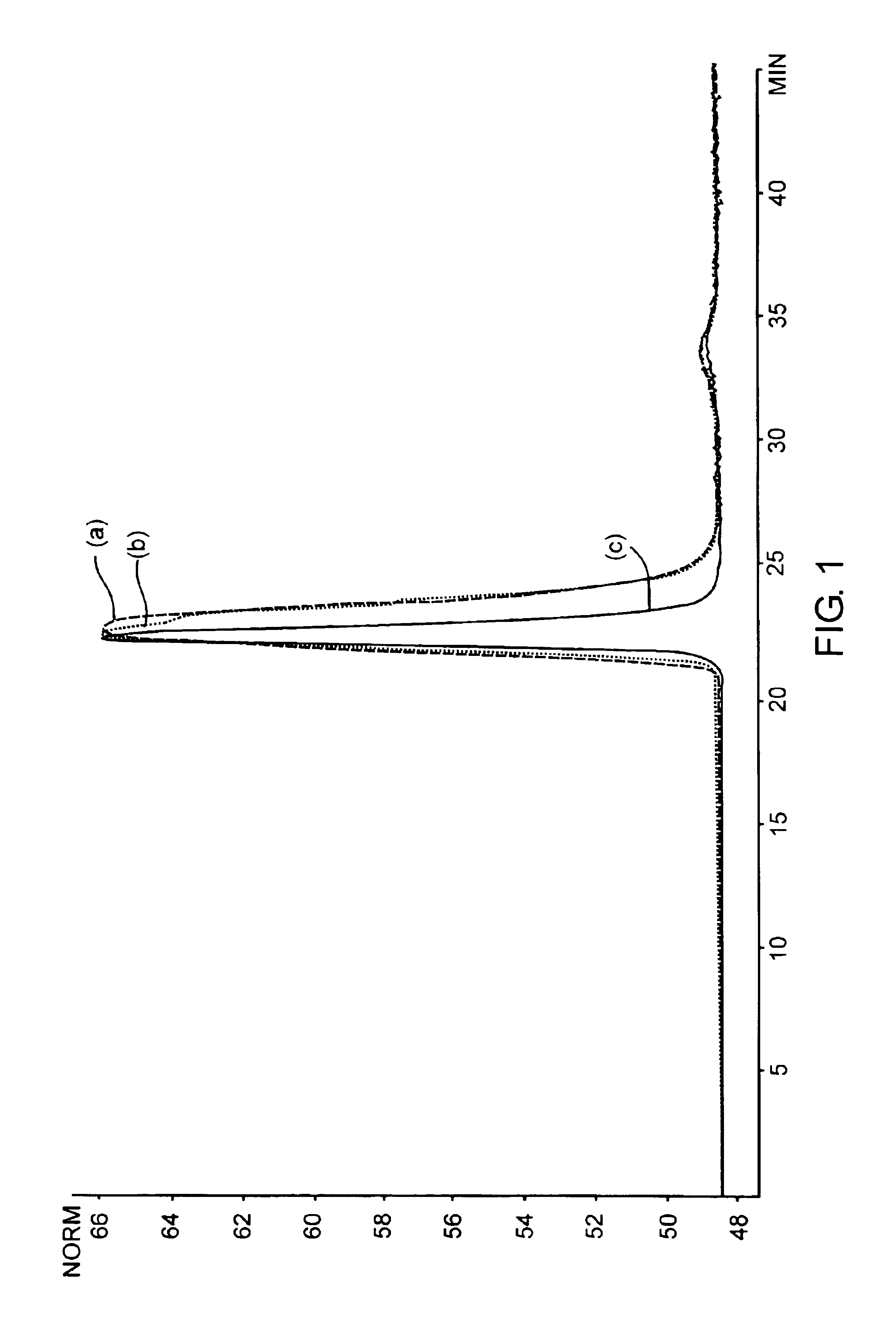Process of fractionating polymers
a technology of polymer and mixture, applied in the direction of organic dyes, etc., can solve the problems of not revealing the ferroelectric film, no reports of methods for adjusting or optimizing the molecular weight distribution of ferroelectric polymers in particular, and no reports of supercritical solvents
- Summary
- Abstract
- Description
- Claims
- Application Information
AI Technical Summary
Benefits of technology
Problems solved by technology
Method used
Image
Examples
Embodiment Construction
[0021]Organic polymers that display ferroelectric properties, and that are suitable for the formation of ferroelectric polymer films, include those derived from vinylidene fluoride, trifluoroethylene, chlorotrifluoroethylene, hexafluoropropene, vinylidene chloride, vinyl fluoride, vinyl chloride, or a mixtures comprising at least one of the foregoing monomers. Other organic polymers are also known to possess ferroelectric properties, for example certain nylons. As discussed above, only certain forms of these polymers may be ferroelectric. “Ferroelectric polymers” as used herein is inclusive of polymers that either possess ferroelectric properties or are capable of possessing ferroelectric properties, for example by heat treatment.
[0022]Vinylidene fluoride polymers are preferred ferroelectric polymers. As used herein, a vinylidene fluoride polymer refers to a homopolymer derived from vinylidene fluoride, or a copolymer derived from vinylidene fluoride monomer units and other, optiona...
PUM
| Property | Measurement | Unit |
|---|---|---|
| Temperature | aaaaa | aaaaa |
| Molecular weight | aaaaa | aaaaa |
| Ratio | aaaaa | aaaaa |
Abstract
Description
Claims
Application Information
 Login to View More
Login to View More - R&D
- Intellectual Property
- Life Sciences
- Materials
- Tech Scout
- Unparalleled Data Quality
- Higher Quality Content
- 60% Fewer Hallucinations
Browse by: Latest US Patents, China's latest patents, Technical Efficacy Thesaurus, Application Domain, Technology Topic, Popular Technical Reports.
© 2025 PatSnap. All rights reserved.Legal|Privacy policy|Modern Slavery Act Transparency Statement|Sitemap|About US| Contact US: help@patsnap.com

